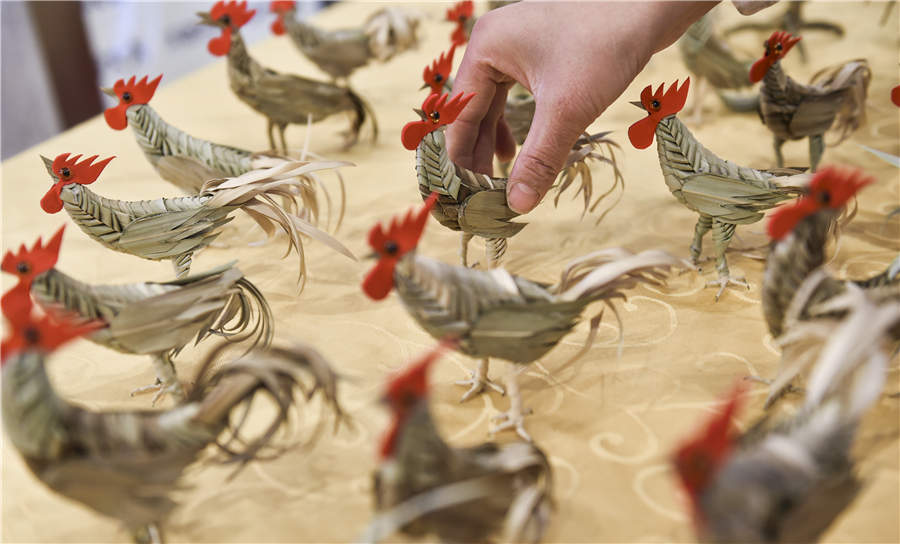Artistic works in the Year of the Rooster

Luoyang craftsmen weave nearly 100 palm fiber roosters to celebrate the upcoming Chinese lunar New Year.
2017 is the Year of the Rooster. Throughout Chinese history, the rooster has held a position of high esteem within the culture. Chinese ancestors regarded the rooster as the “sunbird.” They worshiped roosters as deities and called them “virtuous animals.” As was the case with the phoenix, ancient people believed roosters were auspicious animals. This is why roosters used to be key sacrificial offerings in wedding, funeral and worship ceremonies. They were even used in witchcraft.
Moreover, the word for rooster is a homophone for “lucky” in Chinese. This fortuitous name has not only enhanced the cultural position of roosters in folk customs, but is also a popular element of handicraft items themed around the rooster.
Clay sculpture in Fengxiang County
Fengxiang Painted Clay Sculpture, an item of national intangible cultural heritage, is a traditional folk art in Fengxiang County, Baoji City, Shaanxi Province. This form of clay sculpture has grown into a competitive handicraft event with unique aspects. Local people call the sculptures “goods of clay.”
Fengxiang County is located in the western part of the Central Shaanxi Plain, and there are many ancient clay figurines buried in the tombs that have been unearthed during archaeological expeditions. This demonstrates that the area has a long history of clay sculpting.
Local people buy clay sculptures and place them at home in order to represent key hopes for the future. These sculptures represent the desire for more children as well as happy lives and avoiding evil. Fengxiang Painted Clay Sculptures have ornamental patterns similar to ancient stone carvings, New Year paintings, paper cuts and various types of embroidery. They have exaggerated styles and are brightly colored.
The 2017 CCTV Spring Festival gala will utilize a Fengxiang Clay Sculpture of a phoenix-tail rooster by Hu Ximin, a master of this form of art. His sculpture will be a mascot on stage and be included in poster designs.
Palm fiber weaved rooster
Wang Runxin has inherited ancient intangible cultural heritage skills of palm fiber weaving. This technique comes from Luoyang City, Henan Province, and originated in the Three Kingdoms period, meaning it has been passed down through the generations for more than 1,700 years. Wang constantly strives to improve his skills and develop the process he uses to create these artworks. His palm fiber creations themed around animals and insects are particularly vivid. This year, he and other Luoyang craftsmen weaved nearly 100 palm fiber roosters to celebrate the upcoming Chinese lunar New Year.
